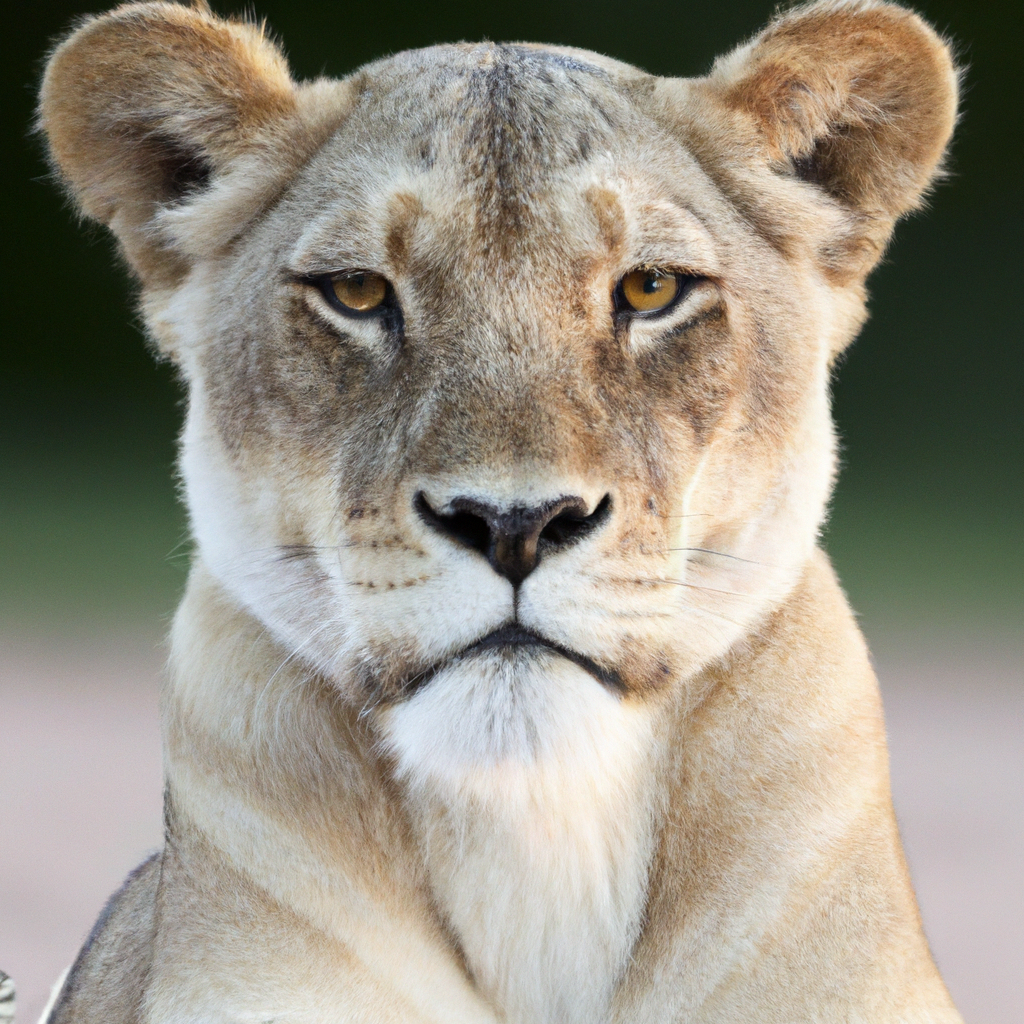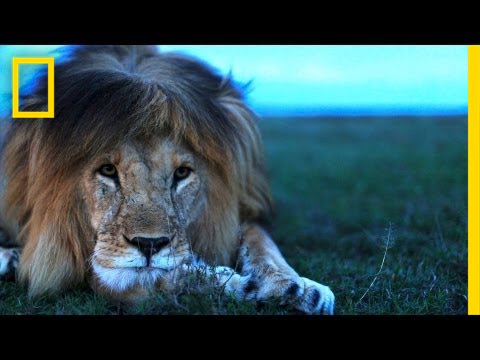So you’ve always been fascinated by lions and their majestic roars, and you’re curious about how these magnificent creatures communicate with each other in the wild? Well, you’re in luck! In this article, we’re going to dive into the world of lion experts and ask them exactly how lions communicate in their natural habitat. Get ready to learn about the intricate ways these regal animals use vocalizations, body language, and even scent marking to convey messages to their pride. It’s time to unlock the secrets of the lion’s language!
Communication in the Wild
Communication is an essential aspect of life for lions in the wild. They rely on various means of communication to convey their intentions, establish social hierarchies, and interact with other members of their pride. Lions employ vocalizations, visual cues, olfactory signals, tactile interactions, and aggressive displays to effectively communicate with one another and navigate their surroundings.
Vocalizations
Lions are known for their powerful vocalizations, which play a vital role in their communication. Roaring, in particular, is one of the most iconic vocal expressions of lions. This resonating sound can carry for miles and serves multiple purposes. One primary function is to assert territorial boundaries and warn other prides and individuals against encroaching on their territory. Roaring also helps in maintaining contact between separated pride members and enhances social cohesion within the pride. By recognizing the distinct roars of their pride mates, lions can determine the location and proximity of one another, ensuring the cohesion of the group.
Apart from roaring, lions employ various other vocal expressions to communicate. They produce sounds like growls, snarls, hisses, and grunts, each carrying its own meaning. These vocalizations are used during different social interactions, such as dominance displays, initiating courtship, or asserting aggression. By combining these vocalizations with body language and other visual cues, lions effectively convey their intentions and maintain social order within the pride.

Visual Communication
In addition to vocalizations, lions utilize a wide array of visual cues for communication within their social groups. Body language plays a significant role in conveying messages and maintaining order within the pride. Postures and movements of lions’ bodies can communicate various emotions, intentions, and social dynamics. For example, a dominant lion might adopt an erect posture, standing tall with its head held high, to assert its authority and intimidate subordinate members. Conversely, a submissive lion may display a crouched posture and a lowered head to show deference to higher-ranking individuals.
Facial expressions are another crucial visual aspect of lion communication. Subtle changes in facial expressions convey emotions such as fear, aggression, or contentment. A relaxed facial expression with eyes closed and mouth slightly open indicates a state of calm and relaxation. On the other hand, a wrinkled nose and bared teeth signify aggression or a warning to intruders. By closely observing these facial expressions, lions can interpret the emotional state of their pride mates and understand their intentions.
Tail movements also serve as a visual communication tool for lions. A twitching or flicking tail may indicate restlessness or irritation, while a relaxed and swaying tail suggests a state of contentment. Lions may also use their tails in more overt displays, such as holding them erect while moving through tall grass to allow for easier visibility and communication within the group.
Olfactory Communication
Lions heavily rely on their sense of smell for communication and marking their territories. Scent marking plays a crucial role in signaling ownership and demarcating boundaries. Male lions, in particular, utilize scent marking as a means of communication. They have specialized scent glands on their cheeks, paws, and tail, which release pheromones that carry individual and territorial information. By rubbing their heads or spraying urine on trees and bushes, male lions communicate their presence, dominance, and reproductive status to other lions in their vicinity.
Another intriguing olfactory behavior observed in lions is the flehmen response. This behavior involves the lion curling its upper lip, exposing the vomeronasal organ located in the roof of the mouth. By doing so, they can detect and analyze chemical signals present in urine or other scent markings left by conspecifics. This behavior allows lions to gather detailed information about the reproductive status, health, and identity of other individuals in their shared habitat.

Tactile Communication
Tactile communication plays a crucial role in lions’ social bonding and maintaining social order within the pride. Licking and grooming are common forms of tactile interactions among pride members. These behaviors serve several purposes, including strengthening social bonds, removing parasites, and showing affection.
Lions engage in mutual grooming sessions, during which they use their rough tongues to remove dirt, tangles, and parasites from each other’s fur. This behavior not only serves a functional purpose but also helps build trust and maintain social cohesion within the pride. Individual lions may also engage in licking as a form of social bonding, often targeting their offspring or fellow pride members. This gentle act of affection reinforces family ties and fosters a sense of unity and cooperation within the pride.
Communication between Pride Members
Within a pride, lions engage in specific communication behaviors to maintain social order and ensure effective coordination among members. One notable form of communication is roaring choruses. During these vocal displays, lions gather together and synchronously roar, creating a powerful and impressive chorus that resonates across the savannah. Roaring choruses serve multiple purposes, such as reaffirming territorial boundaries, intimidating rival prides, and fostering unity and cooperation within the pride.
Greeting rituals are another crucial means of communication among pride members. When lions meet, they engage in various behaviors to establish social bonds and reinforce group cohesion. They may rub against each other, engage in head-rubbing, or engage in mutual grooming sessions. These greetings serve as a way of recognizing kinship, reaffirming alliances, and defusing any potential tensions within the pride.

Mother-Offspring Communication
Mothers and offspring in a lion pride have their unique communication methods, which strengthen the bond between them. One primary form of communication is through contact calls. Mother lions emit low, mewing sounds to locate and communicate with their cubs. These calls serve the dual purpose of ensuring the safety of the cubs and helping them recognize their mother’s distinct voice among the pride.
Facial expressions also play a crucial role in mother-offspring communication. Mothers use their facial expressions, particularly their eyes and mouth, to convey reassurance, affection, and warnings to their cubs. By subtly changing their facial expressions, mother lions can communicate various messages, helping their offspring navigate their surroundings and learn essential survival skills.
Territory and Boundary Communication
Establishing and maintaining territorial boundaries is crucial for lion prides. Communication plays a vital role in this aspect of lion behavior. Boundary patrols are conducted by lions as a means of communication and defense. During these patrols, lions mark their territory by spraying urine, leaving scent marks, and scratching trees or bushes with their claws. These behaviors effectively communicate to other lions the boundaries of their territory and serve as a warning to potential invaders.
In addition to marking physical boundaries, lions also employ urinating and defecating as forms of communication. By leaving their scent through urine and faeces, lions can signal their presence and assert dominance over a particular area. The unique scent of individual lions helps establish their identity and status within the pride, as well as provide information about their reproductive state and overall health.

Aggressive Communication
Although lions are social animals, aggression can arise within prides and between rival groups. Aggressive communication serves to establish dominance, resolve conflicts, and defend resources. Displays of aggression are visually striking and can involve a combination of vocalizations, body language, and physical confrontation.
In aggressive displays, lions may vocalize loudly, growl, snarl, or roar aggressively. These vocalizations are accompanied by intense body language, such as raised fur, bared teeth, and an erect posture. Lions may engage in mock charges, wherein they sprint toward their opponents but stop short of physical contact, as a means of displaying their dominance and intimidating rivals.
In escalated situations, aggression may lead to physical confrontations. These confrontations involve biting, swatting with paws, and wrestling. Physical fights usually occur between males during territorial disputes or when establishing dominance within a pride. These aggressive encounters serve to establish precedence and ensure robust social structures within the pride.
Interactions with Other Species
Lions also interact with other species in their environment and utilize different forms of communication to navigate these encounters. Vocalizations, similar to those used within their pride, can be employed to communicate with neighboring wildlife. By roaring, lions can establish contact and convey their presence to other species. Additionally, lions may emit vocal warning signs to alert other animals of their territorial boundaries or to express discomfort or aggression.

Differences in Communication between Male and Female Lions
While both male and female lions utilize various forms of communication, there are some differences in their communication strategies. Vocalizations, for instance, can differ between the sexes. Males often have a deeper and more resonant roar compared to females. The purpose of male vocalizations is often related to asserting dominance, defending territories, and attracting mates. Females, on the other hand, employ vocalizations primarily for coordinating activities within the pride and maintaining contact with their offspring.
Scent marking is another area where communication differs between male and female lions. Male lions employ scent marking extensively to assert their dominance and mark territorial boundaries. This behavior serves as a visible and olfactory clue to other lions regarding their presence and dominance. Female lions also engage in scent marking, but to a lesser extent, focusing more on communal scent marking within the pride to maintain social cohesion and recognize pride members.
In conclusion, lions employ a diverse range of communication methods to navigate their social dynamics, establish territorial boundaries, and interact with their environment. Vocalizations, visual cues, olfactory signals, tactile interactions, and aggressive displays all contribute to effective communication within pride members, between males and females, and even in interactions with other species. Through these various forms of communication, lions maintain social order, strengthen family bonds, and ensure efficient coordination within their prides in the wild.

